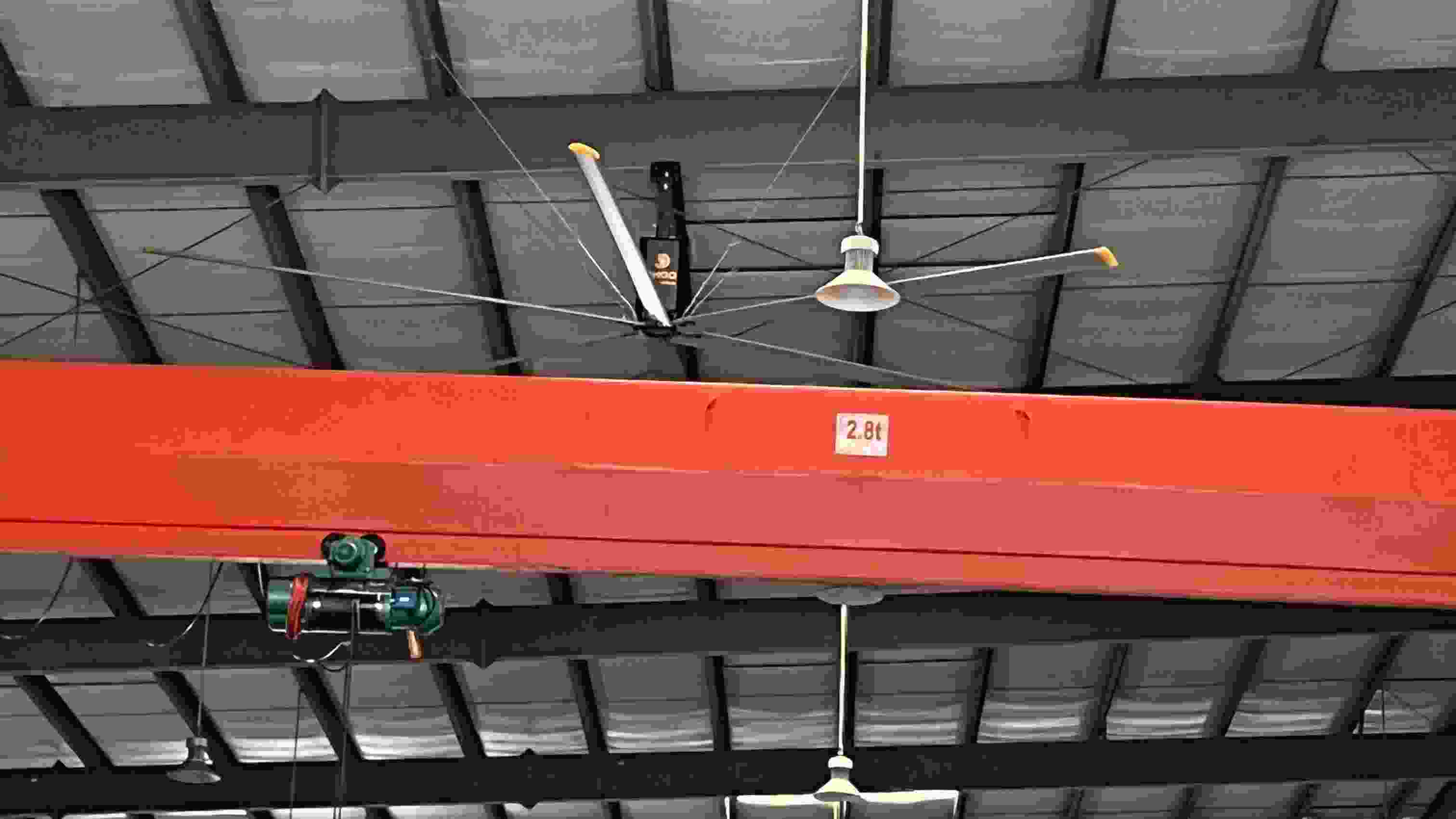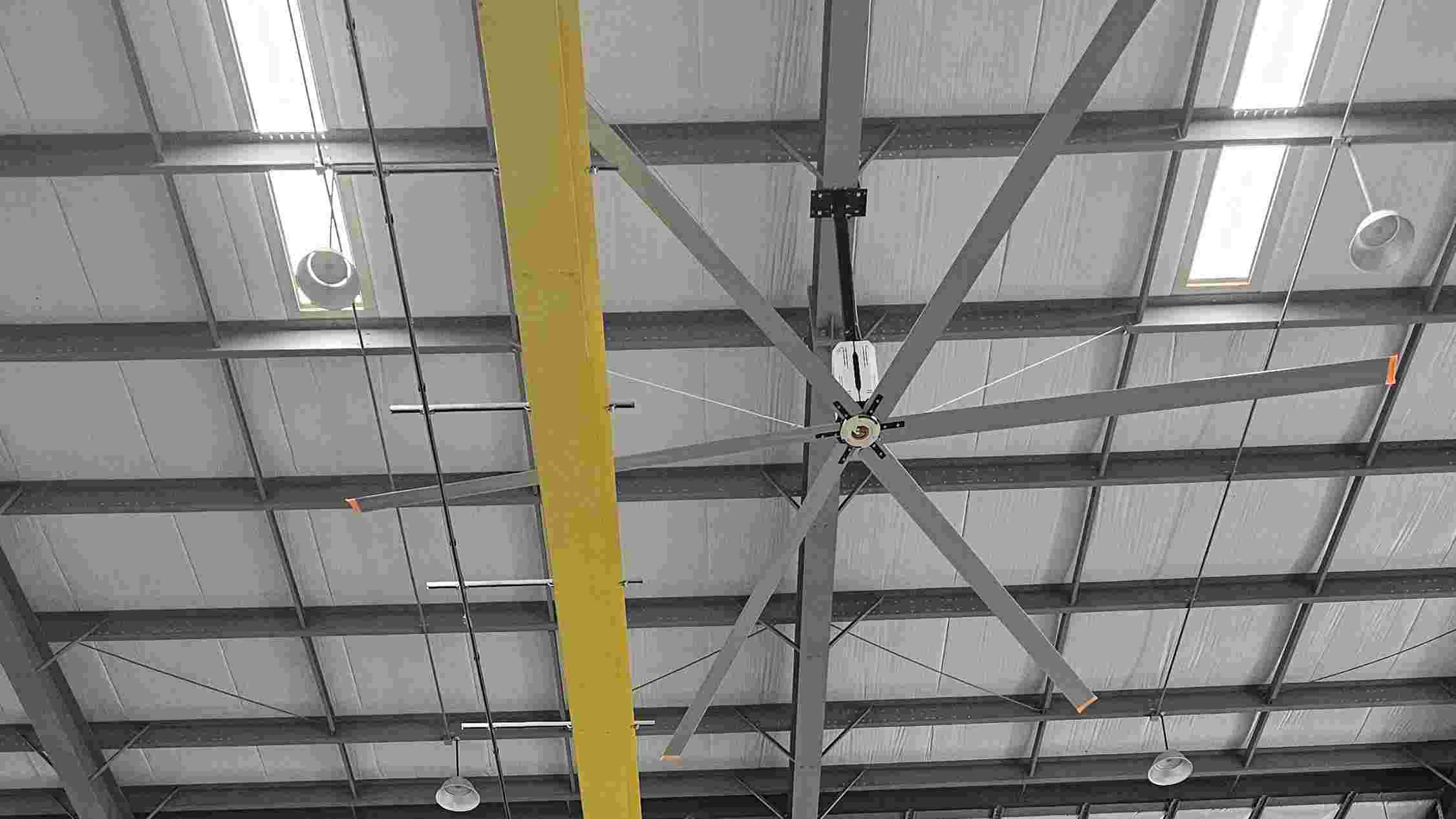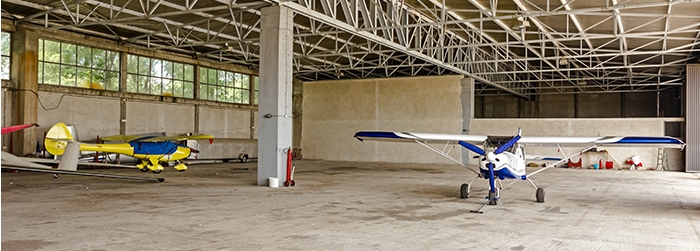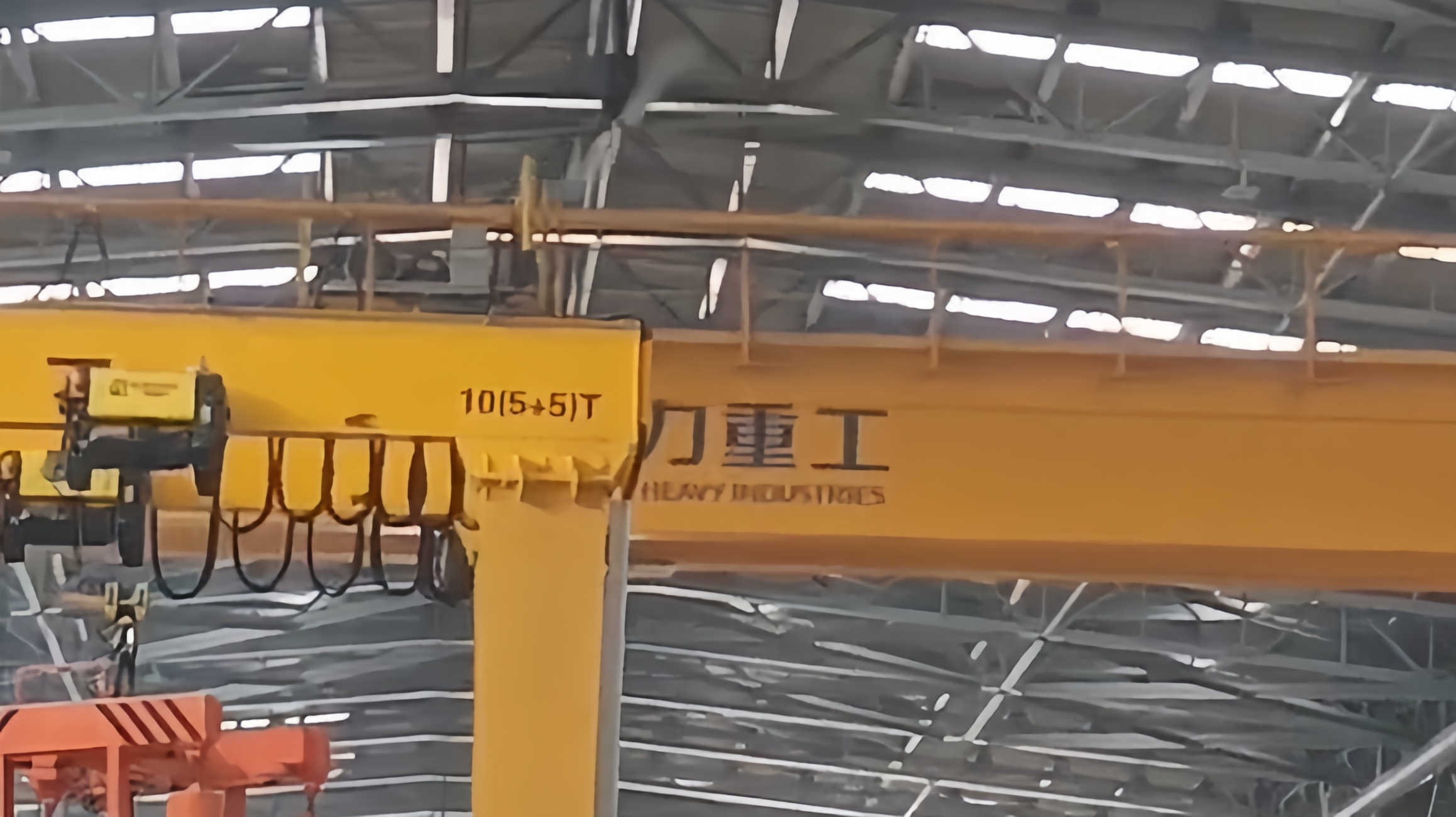Research on Air Stratification in Airport Hangars with Low Speed and High Airflow Fans
Air stratification, which occurs when warm air rises and cool air settles at the floor, is a common issue in large spaces with high ceilings, such as airport hangars. This phenomenon leads to inefficient temperature distribution, increased energy consumption, and higher heating costs. To address these challenges, research has focused on using Low Speed, High Airflow (HVLS) fans to improve air circulation, reduce stratification, and enhance overall energy efficiency.
Understanding Air Stratification
Air stratification in large facilities occurs because warm air, being less dense, naturally rises toward the ceiling, while cooler air accumulates near the floor. This results in a significant temperature difference between the floor and ceiling, which can be as much as 20-30°F (about 10-15°C). The stratified air layer at the ceiling often causes excessive energy consumption, especially in heating systems, as they must work harder to maintain a consistent temperature across the space. In airport hangars, where large volumes of air need to be conditioned, this inefficiency leads to considerable heating costs during colder months.
HVLS Fans: A Solution to Air Stratification
HVLS fans, characterized by their large diameter and low-speed operation, are increasingly used in industrial applications to address air stratification. These fans are designed to move large volumes of air at low speeds, creating a gentle breeze that mixes the warm air near the ceiling with cooler air at the floor. This process, known as air destratification, reduces temperature imbalances within the space, promoting a more uniform temperature distribution across the hangar.
Studies have shown that by circulating air effectively, HVLS fans can reduce the temperature gradient from floor to ceiling, allowing HVAC systems to operate more efficiently. This results in lower energy consumption for heating and cooling. In fact, research conducted in airport hangars has demonstrated that the use of HVLS fans can reduce annual heating costs by up to 20-30%, depending on the size of the facility and the efficiency of the fan system.
Benefits of HVLS Fans in Airport Hangars
Energy Efficiency: HVLS fans help to lower the load on heating and cooling systems by improving air circulation. During winter, these fans are particularly effective in reducing the need for heating by circulating the warm air that typically accumulates at the ceiling. By redistributing this air more evenly, the HVAC system can operate more efficiently, cutting down on energy use.
Cost Savings: The reduction in energy consumption directly translates into cost savings. In airport hangars, where large spaces need to be heated or cooled, the use of HVLS fans can result in significant savings in operational costs. Studies have indicated that the energy savings from HVLS fans alone can lead to a return on investment within just a few years.
Improved Comfort: Air destratification improves thermal comfort for workers and occupants. Instead of experiencing drastic temperature fluctuations within the same space, employees can work in a more comfortable environment. This is particularly important in hangars, where personnel work on aircraft maintenance and other tasks that require precise conditions.
Environmental Impact: With the growing emphasis on sustainability, reducing energy consumption not only leads to cost savings but also helps in minimizing the carbon footprint of the facility. HVLS fans contribute to this effort by reducing the reliance on energy-intensive heating systems and helping to meet environmental regulations.
Research Insights
One study published in the ASHRAE Journal evaluated the use of HVLS fans in an airport hangar in Frankfort, Kentucky. The study showed that by installing a 20-foot diameter HVLS fan, the temperature difference between the floor and ceiling was significantly reduced. The fan’s gentle air movement helped mix the air effectively without creating a cooling effect on the occupants, which is often a concern with high-speed fans. The study found that the fan improved overall temperature distribution and reduced heating costs by up to 30%, highlighting the effectiveness of HVLS fans in large commercial spaces.
Conclusion
The application of Low Speed, High Airflow fans in airport hangars presents a promising solution to the problem of air stratification. By enhancing air circulation, reducing energy consumption, and improving overall comfort, HVLS fans provide significant operational and cost-saving benefits. Research and case studies continue to demonstrate their potential in large spaces, making them a valuable investment for airport hangars and other industrial facilities looking to improve energy efficiency and reduce operating costs.
For further reading on HVLS fans and their applications, check out resources from ASHRAE or manufacturers like Hunter Industrial Fans and Big Ass Fans, which provide extensive data on the energy-saving capabilities of these systems.
 suria giant fan
suria giant fan
 Commercial Fans
Commercial Fans
 Research on Air Stratification
Research on Air Stratification
 Industrial Ceiling Fans in Sou
Industrial Ceiling Fans in Sou
